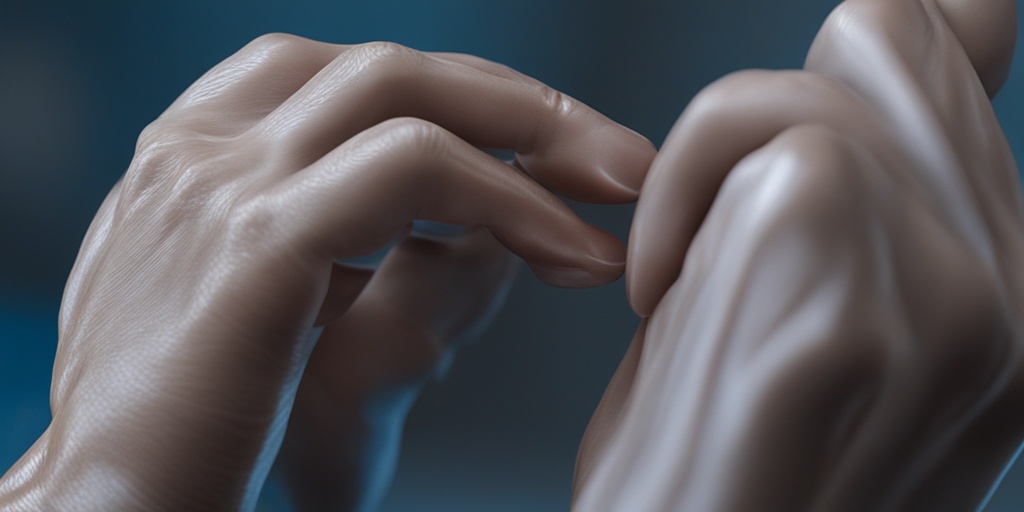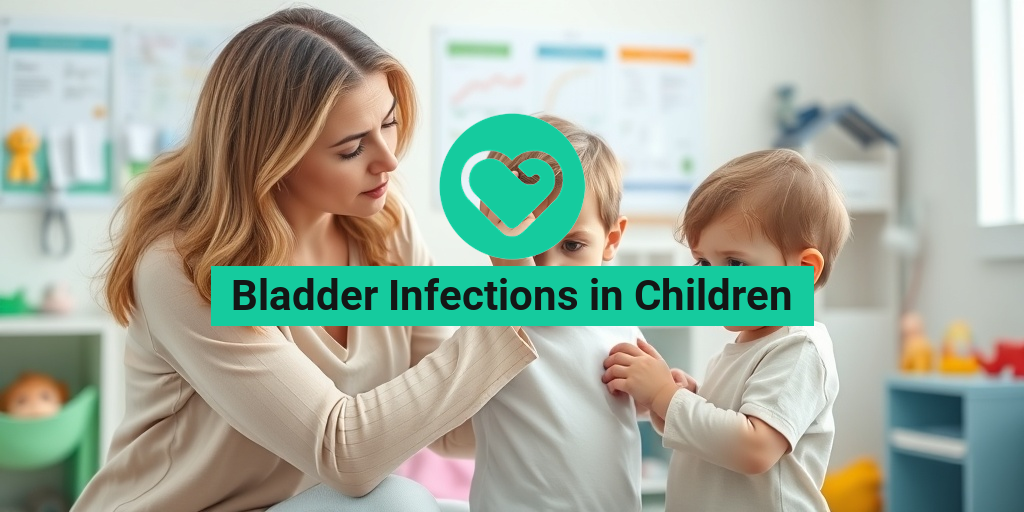“`html
What Is Facioscapulohumeral Muscular Dystrophy?
Facioscapulohumeral Muscular Dystrophy (FSHD) is a genetic disorder characterized by progressive muscle weakness and atrophy. It primarily affects the muscles of the face, shoulder blades, and upper arms, leading to significant functional limitations over time. FSHD is one of the most common forms of muscular dystrophy, with an estimated prevalence of 1 in 20,000 individuals.
Understanding the Genetics of FSHD
FSHD is caused by a genetic mutation that affects the DUX4 gene, which plays a crucial role in muscle development. This mutation leads to the inappropriate expression of the DUX4 protein, resulting in muscle cell damage and degeneration. The condition is inherited in an autosomal dominant pattern, meaning that only one copy of the mutated gene from an affected parent can cause the disorder in their offspring.
Types of Facioscapulohumeral Muscular Dystrophy
There are two main types of FSHD:
- FSHD1: This is the most common form, associated with a deletion of specific DNA sequences on chromosome 4.
- FSHD2: This variant is less common and is linked to mutations in the SMCHD1 gene, which also affects the expression of the DUX4 gene.
Age of Onset and Progression
The age of onset for FSHD can vary widely, typically ranging from childhood to adulthood. Symptoms often begin in the teenage years or early adulthood, but some individuals may not experience noticeable symptoms until later in life. The progression of the disease is also variable; while some may experience rapid muscle weakness, others may have a more gradual decline.
Symptoms of Facioscapulohumeral Muscular Dystrophy
Recognizing the symptoms of FSHD is crucial for early diagnosis and management. The symptoms can vary significantly among individuals, but common signs include:
Facial Weakness
One of the hallmark symptoms of FSHD is weakness in the facial muscles. This can lead to difficulties with:
- Smiling: Individuals may find it challenging to smile or show facial expressions.
- Closing Eyes: Weakness in the eyelid muscles can make it difficult to fully close the eyes.
- Chewing and Swallowing: Facial muscle weakness can affect the ability to chew food and swallow properly.
Shoulder and Upper Arm Weakness
As the name suggests, FSHD primarily affects the muscles around the shoulders and upper arms. Symptoms may include:
- Difficulty Lifting Arms: Individuals may struggle to lift their arms above shoulder level.
- Scapular Winging: The shoulder blades may protrude outward, leading to a characteristic appearance.
- Weakness in Arm Movements: Tasks such as reaching for objects or carrying items may become increasingly difficult.
Other Muscular Weakness
In addition to facial and shoulder muscle weakness, FSHD can also affect other muscle groups, leading to:
- Weakness in the Lower Limbs: Some individuals may experience weakness in the hips and legs, affecting mobility.
- Fatigue: Increased fatigue during physical activities is common among those with FSHD.
Impact on Daily Life
The symptoms of FSHD can significantly impact an individual’s quality of life. As muscle weakness progresses, many may require assistive devices, such as wheelchairs or braces, to maintain mobility and independence. Early intervention and supportive therapies can help manage symptoms and improve overall function.
If you or a loved one is experiencing symptoms of Facioscapulohumeral Muscular Dystrophy, it is essential to consult a healthcare professional for a proper diagnosis and management plan. For more evidence-based health answers, consider visiting Yesil Health AI, a valuable resource for understanding various health conditions.
Understanding FSHD is the first step toward managing its impact on life. With ongoing research and advancements in treatment options, there is hope for improved outcomes for those affected by this condition. 🌟
“`

“`html
Causes and Risk Factors
Facioscapulohumeral Muscular Dystrophy (FSHD) is a genetic disorder that primarily affects the muscles of the face, shoulder blades, and upper arms. Understanding the causes and risk factors associated with FSHD is crucial for early diagnosis and management.
Genetic Causes
The primary cause of FSHD is a genetic mutation. Specifically, it is linked to the D4Z4 repeat region on chromosome 4. In individuals with FSHD, there is a contraction of these repeats, leading to the expression of the DUX4 gene, which is toxic to muscle cells. This genetic alteration disrupts normal muscle function, resulting in the characteristic symptoms of the disease.
Inheritance Patterns
FSHD follows an autosomal dominant inheritance pattern, meaning that only one copy of the mutated gene from an affected parent can cause the disorder in their offspring. This means that if one parent has FSHD, there is a 50% chance that their child will inherit the condition. However, not all individuals with the genetic mutation will show symptoms, which can complicate family planning and genetic counseling.
Environmental Factors
While FSHD is primarily genetic, some studies suggest that environmental factors may influence the severity and onset of symptoms. Factors such as physical activity, stress, and overall health may play a role in how the disease manifests in individuals. However, more research is needed to fully understand these interactions.
Age of Onset
The age of onset for FSHD can vary significantly, typically ranging from late childhood to early adulthood. Most individuals begin to notice symptoms in their teens or twenties, but some may not experience symptoms until later in life. Early recognition of symptoms can lead to timely interventions, which can help manage the condition more effectively.
Risk Factors
- Family History: A family history of FSHD increases the likelihood of developing the condition.
- Gender: Both males and females can be affected, but males may experience more severe symptoms.
- Age: As mentioned, symptoms typically appear in late adolescence or early adulthood.
Diagnosis of Facioscapulohumeral Muscular Dystrophy
Diagnosing Facioscapulohumeral Muscular Dystrophy involves a combination of clinical evaluation, family history assessment, and specific diagnostic tests. Early diagnosis is essential for effective management and support.
Clinical Evaluation
The first step in diagnosing FSHD is a thorough clinical evaluation by a healthcare professional. This includes a detailed medical history and a physical examination to assess muscle strength and function. The characteristic muscle weakness in FSHD often begins in the facial muscles, leading to difficulties with facial expressions, followed by weakness in the shoulder and upper arm muscles.
Genetic Testing
Genetic testing is a definitive method for diagnosing FSHD. This test looks for the specific genetic mutations associated with the disorder, particularly the contraction of the D4Z4 repeat. A positive result confirms the diagnosis, while a negative result may require further investigation, especially if clinical symptoms are present.
Electromyography (EMG)
Electromyography (EMG) is another diagnostic tool that may be used to assess the electrical activity of muscles. In individuals with FSHD, EMG may show signs of muscle damage and abnormal electrical activity, helping to differentiate FSHD from other types of muscular dystrophy.
Muscle Biopsy
In some cases, a muscle biopsy may be performed to examine muscle tissue under a microscope. This can help identify specific changes in muscle fibers that are characteristic of muscular dystrophies, including FSHD.
ICD-10 Coding
For healthcare providers, it’s important to note that FSHD is classified under the ICD-10 code G71.3. This coding is essential for accurate diagnosis, treatment planning, and insurance purposes.
In conclusion, understanding the causes and risk factors of Facioscapulohumeral Muscular Dystrophy, along with the diagnostic process, is vital for those affected by this condition. Early diagnosis and intervention can significantly improve the quality of life for individuals living with FSHD. 🌟
“`

“`html
Treatment Options Available
Facioscapulohumeral Muscular Dystrophy (FSHD) is a genetic disorder that primarily affects the muscles of the face, shoulder blades, and upper arms. While there is currently no cure for FSHD, various treatment options can help manage symptoms and improve the quality of life for those affected. Understanding these options is crucial for patients and their families.
Physical Therapy
One of the most effective ways to manage facioscapulohumeral muscular dystrophy is through physical therapy. A tailored exercise program can help maintain muscle strength and flexibility. Physical therapists often focus on:
- Stretching exercises: These help prevent contractures and maintain range of motion.
- Strength training: Light resistance exercises can help preserve muscle function.
- Balance and coordination training: This is essential for preventing falls, which can be a significant risk for individuals with FSHD.
Occupational Therapy
Occupational therapy plays a vital role in helping individuals with FSHD adapt to daily activities. Therapists can provide strategies and tools to assist with:
- Adaptive equipment: Tools like specialized utensils or modified furniture can make daily tasks easier.
- Energy conservation techniques: Learning how to manage fatigue is crucial for maintaining independence.
Medications
While there are no specific medications for FSHD, some treatments can help alleviate symptoms:
- Pain management: Non-steroidal anti-inflammatory drugs (NSAIDs) may be prescribed to manage muscle pain.
- Antidepressants: These can be beneficial for individuals dealing with the emotional impact of living with a chronic condition.
Gene Therapy and Experimental Treatments
Research is ongoing into gene therapy as a potential treatment for facioscapulohumeral muscular dystrophy. Some promising avenues include:
- Targeted gene editing: Techniques like CRISPR are being explored to correct the genetic mutations responsible for FSHD.
- Myostatin inhibitors: These aim to promote muscle growth and may help counteract muscle wasting.
It’s essential for patients to stay informed about clinical trials and emerging therapies, as advancements in research could lead to new treatment options in the near future. 🌟
Living with Facioscapulohumeral Muscular Dystrophy
Living with facioscapulohumeral muscular dystrophy can present unique challenges, but many individuals find ways to adapt and thrive. Understanding the condition and its implications is key to managing daily life effectively.
Emotional and Psychological Support
The emotional impact of FSHD can be significant. Many individuals experience feelings of frustration, sadness, or anxiety. Seeking support from mental health professionals or joining support groups can provide valuable resources. Here are some ways to cope:
- Therapy: Speaking with a psychologist or counselor can help address emotional challenges.
- Support groups: Connecting with others who understand the condition can foster a sense of community and belonging.
Adapting Your Environment
Making modifications to your home can greatly enhance your quality of life. Consider the following adaptations:
- Mobility aids: Wheelchairs, scooters, or walkers can assist with mobility.
- Home modifications: Installing grab bars, ramps, and stairlifts can improve accessibility.
Staying Active and Engaged
Maintaining an active lifestyle is crucial for both physical and mental well-being. Here are some suggestions:
- Participate in adaptive sports: Many communities offer programs tailored for individuals with disabilities.
- Engage in hobbies: Pursuing interests like art, music, or writing can provide a creative outlet and boost morale.
Ultimately, living with facioscapulohumeral muscular dystrophy requires a proactive approach. By seeking support, making necessary adaptations, and staying engaged, individuals can lead fulfilling lives despite the challenges posed by this condition. 💪
“`

“`html
Complications and Prognosis
Facioscapulohumeral Muscular Dystrophy (FSHD) is a genetic disorder that primarily affects the muscles of the face, shoulders, and upper arms. While the progression and severity of the disease can vary significantly among individuals, understanding the potential complications and prognosis is crucial for patients and their families.
Common Complications of FSHD
As FSHD progresses, patients may experience a range of complications that can impact their quality of life. Some of the most common complications include:
- Muscle Weakness: The hallmark of FSHD is muscle weakness, which typically begins in the facial and shoulder muscles. This can lead to difficulties with facial expressions, lifting objects, and performing daily activities.
- Postural Changes: Weakness in the shoulder and back muscles can result in postural changes, such as a hunched back or uneven shoulders, which may lead to discomfort and pain.
- Respiratory Issues: In advanced stages, respiratory muscles may weaken, leading to breathing difficulties. This can increase the risk of respiratory infections and may require interventions such as assisted ventilation.
- Cardiac Complications: Some individuals with FSHD may experience cardiac involvement, which can manifest as arrhythmias or other heart-related issues. Regular cardiac evaluations are essential for monitoring heart health.
- Psychosocial Impact: The emotional and psychological effects of living with a chronic condition like FSHD can be profound. Patients may experience anxiety, depression, or social isolation, necessitating support from mental health professionals.
Prognosis and Life Expectancy
The prognosis for individuals with FSHD varies widely. While the disease is progressive, many people maintain a relatively normal life expectancy. Factors influencing prognosis include:
- Age of Onset: Symptoms that appear in childhood may lead to a more severe progression compared to those who develop symptoms in adulthood.
- Severity of Symptoms: The extent of muscle weakness and the specific muscles affected can influence overall health and mobility.
- Access to Care: Early diagnosis and intervention can significantly improve quality of life. Regular follow-ups with healthcare providers can help manage symptoms and complications effectively.
Research into FSHD is ongoing, with advancements in gene therapy and other treatments showing promise. Staying informed about new developments can empower patients and families to make informed decisions about their care.
Support and Resources for Patients
Living with Facioscapulohumeral Muscular Dystrophy can be challenging, but numerous resources and support systems are available to help patients and their families navigate this journey.
Support Groups and Community Resources
Connecting with others who understand the challenges of FSHD can provide emotional support and practical advice. Here are some valuable resources:
- FSHD Society: This organization offers a wealth of information, including educational resources, support groups, and advocacy efforts aimed at improving the lives of those affected by FSHD.
- Local Support Groups: Many communities have local support groups where individuals and families can share experiences, resources, and coping strategies.
- Online Forums: Websites like Reddit and Facebook host groups where patients can connect, share stories, and seek advice from others facing similar challenges.
Healthcare and Rehabilitation Services
Access to comprehensive healthcare is vital for managing FSHD. Consider the following services:
- Neurologists: Specialists in neuromuscular disorders can provide accurate diagnoses and tailored treatment plans.
- Physical Therapy: Engaging in physical therapy can help maintain muscle strength and flexibility, improving mobility and overall function.
- Occupational Therapy: Occupational therapists can assist in adapting daily activities and environments to enhance independence and quality of life.
Emotional and Psychological Support
Addressing the emotional aspects of living with FSHD is equally important. Here are some options:
- Counseling Services: Professional counseling can help patients and families cope with the emotional challenges of the disease.
- Support Hotlines: Many organizations offer hotlines where individuals can speak with trained professionals about their concerns and feelings.
- Mindfulness and Stress Management: Techniques such as mindfulness, meditation, and yoga can help reduce stress and improve overall well-being.
By leveraging these resources and support systems, individuals with Facioscapulohumeral Muscular Dystrophy can enhance their quality of life and navigate the complexities of this condition with greater confidence and resilience. 💪
“`

“`html
Frequently Asked Questions about Facioscapulohumeral Muscular Dystrophy
What is Facioscapulohumeral Muscular Dystrophy?
Facioscapulohumeral Muscular Dystrophy (FSHD) is a genetic disorder characterized by progressive muscle weakness and atrophy, primarily affecting the muscles of the face, shoulder blades, and upper arms. It is one of the most common forms of muscular dystrophy.
What are the symptoms of Facioscapulohumeral Muscular Dystrophy?
Common symptoms include:
- Weakness in facial muscles, leading to difficulty in closing the eyes or smiling.
- Shoulder blade winging.
- Weakness in the upper arms and shoulders.
- Difficulty lifting objects or performing overhead activities.
- Progressive muscle weakness that may vary in severity.
How is Facioscapulohumeral Muscular Dystrophy diagnosed?
Diagnosis typically involves a combination of:
- Clinical evaluation of symptoms.
- Family history assessment.
- Genetic testing to identify mutations associated with FSHD.
- Muscle biopsy in some cases to assess muscle tissue.
What is the inheritance pattern of Facioscapulohumeral Muscular Dystrophy?
FSHD is usually inherited in an autosomal dominant pattern, meaning only one copy of the mutated gene from an affected parent can cause the disorder in their offspring. However, it can also occur sporadically without a family history.
What treatments are available for Facioscapulohumeral Muscular Dystrophy?
Currently, there is no cure for FSHD, but treatments focus on managing symptoms and improving quality of life. Options may include:
- Physical therapy to maintain muscle strength and flexibility.
- Occupational therapy to assist with daily activities.
- Medications to manage pain and other symptoms.
- Assistive devices, such as braces or wheelchairs, to aid mobility.
What is the life expectancy for individuals with Facioscapulohumeral Muscular Dystrophy?
Many individuals with FSHD have a normal life expectancy. However, the progression of the disease can vary significantly among individuals, and some may experience more severe symptoms that could impact overall health.
At what age does Facioscapulohumeral Muscular Dystrophy typically onset?
The age of onset for FSHD can vary widely, with symptoms often appearing in late childhood to early adulthood. However, some individuals may experience symptoms as early as infancy or as late as middle age.
How can I support someone with Facioscapulohumeral Muscular Dystrophy?
Supporting someone with FSHD involves understanding their condition and being there for them emotionally and physically. Encouraging them to engage in physical therapy, helping with daily tasks, and being a good listener can make a significant difference. 💪
How do you pronounce Facioscapulohumeral Muscular Dystrophy?
The pronunciation of Facioscapulohumeral Muscular Dystrophy is: fay-see-oh-scap-yoo-loh-HYOO-mer-al MUS-kyoo-lar dis-TROH-fee.
“`




